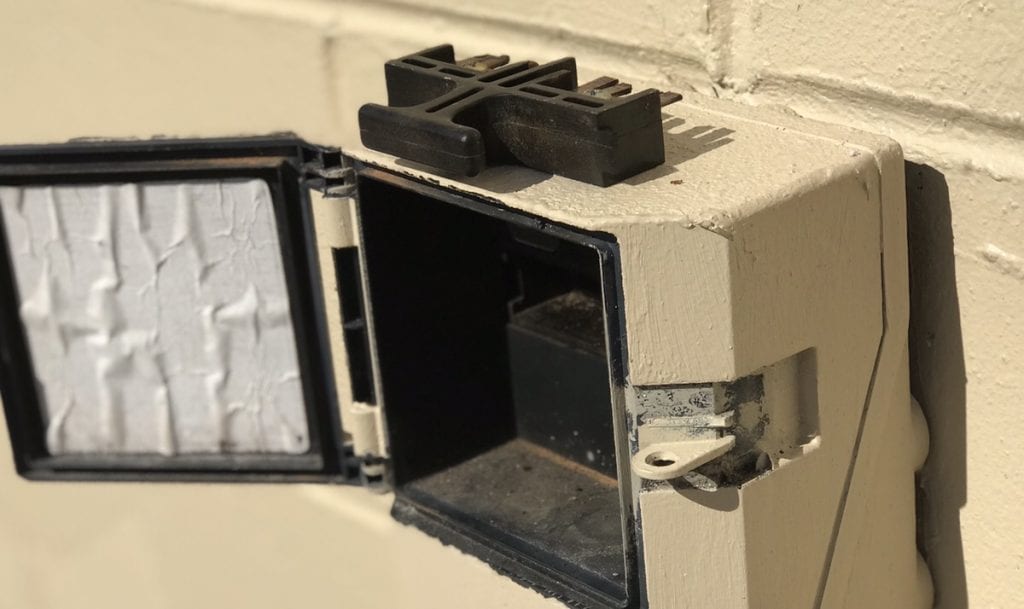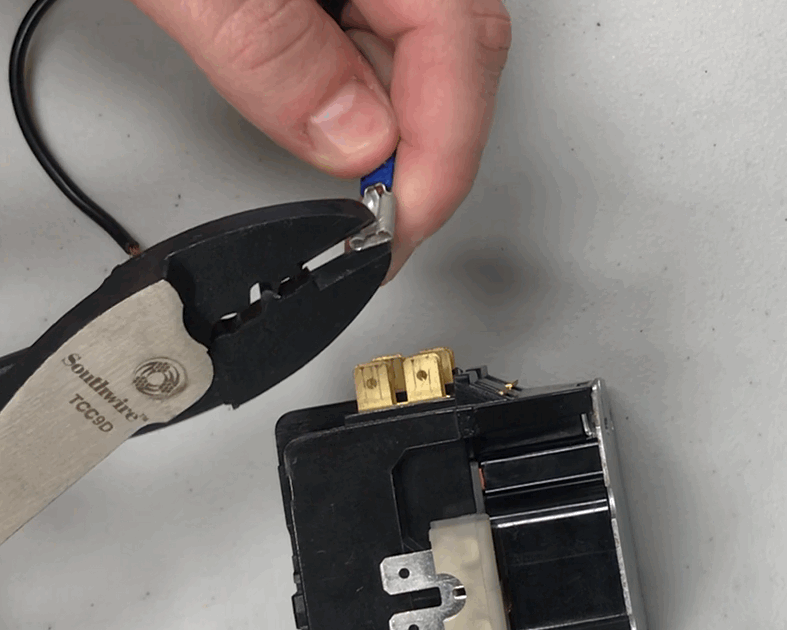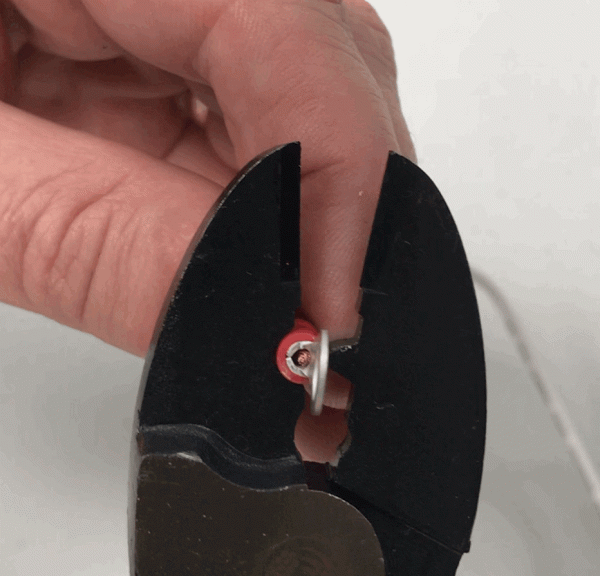Get Tech Tips
Subscribe to free tech tips.
4 Silly Mistakes of The New HVAC Tech

We've all been new at one time or another. So, there is no need to get all judgy about some of the mistakes new techs make just because they are inexperienced.
However…
These are some very preventable mistakes that occur due to simple oversights and carelessness that need to happen 0% of the time.
1. Bad Practices with Caps and Seals

Leaving caps off is never OK. While it's true that Schrader valves and back-seating service valves “should” seal completely and shouldn't be left leaking, it is always possible that a little leakage can happen. Besides, keeping bugs and dirt out of the ports is reason enough to keep the caps on.
Bill Johnson (co-author of Refrigeration and Air Conditioning Technology) made a really good point on an older episode of the podcast. When a system is apparently low (which you can verify through non-invasive temperature tests), you shouldn't just pull off the caps and attach the gauges. First, look for oil at the ports and leak check them to eliminate port leaks as a possible cause. Once you remove the caps and attach your manifold, you won't be able to know if the ports were a leak point or not.
Every time I remove caps, I look inside them to make sure they are in place unless it is a flare hex cap that doesn't require a seal.
It's a good practice to keep all caps and screws together and in the same place on every call. That helps ensure that they don't get accidentally knocked into the dirt, lost, or forgotten. Put those caps back on—finger-tight for caps with seals—and snugged up with a wrench for hex flare caps (on Trane residential units, for example).
2. Leaving Disconnects Out/Off

Obviously, nobody TRIES to forget the disconnect, but it still happens all the time. It's almost always because the tech gets in a hurry or distracted (usually both), and it can be eliminated easily by some best practices.
Most often, the disconnect is left off or out during maintenance or very simple repairs. That is because the tech will often run test the equipment, then they'll perform the maintenance or minor repair and leave without run testing again. This order—test first and then clean/repair—isn't my favorite for several reasons, with silly mistakes being one of them.
I advocate for performing the comprehensive run test at the very end of a repair or maintenance, meaning you are observing the system running right before you leave. Your last action should be resetting the thermostat or controls back to the desired setpoint. When you run your tests last, you don't forget silly things that prevent the system from running.
Always do a final walk of the job before leaving, checking disconnects and setpoints, cleaning up, and checking for tools.
3. Making Poor Electrical Connections
I see it all the time. The capacitors have been tested, and the spade connections are left loose, contactor lugs improperly torqued, stranded wires with some of the strands cut off to make the wire fit, crimp connections on solid wire… the list goes on and on. Here are the top mistakes to avoid:

- When sliding on a female spade (on a capacitor, for example), it should be very snug. If it is loose at all, pull it off and pinch down the spade sides a bit to ensure it's a snug fit.

- When making a crimp connection, only do so on a stranded wire. Eric Kaiser talked about this on the podcast, too. Also, use an appropriately sized connector. Position the jaws so that the indent crimp is made on the side of the connector OPPOSITE the split in the barrel. It's even better to use a crimper specifically designed for insulated terminals, particularly a crimper that compresses the entire barrel.
- Never cut strands of wire to make a conductor fit under a lug. Use the proper connection (termination) type for the conductor.
- Never leave wire exposed; strip back insulation only to the length required to make the connection and no more.
- Don't leave connections under tension. Use straps and zip ties to keep tension away from connections so that they aren't left under a pulling/disconnecting force.
- Make appropriate connections for the job; never leave connections open to the environment unless they are rated for it.
When making any electrical connection, always pull the connection to make sure it is a snug fit before walking away.
4. Failing to See the Obvious

So much is made of good workmanship (how things look) and diagnosis (figuring out what's wrong), and rightfully so. However, for a new technician, nobody expects you to do the best-looking work out there or to diagnose super-difficult situations. You are expected to use common sense and spot things that are out of the ordinary or that can lead to issues. Here is a quick list of things to look out for that you can see with little to no experience:
- Look for refrigerant oil stains; oil stains or residue can often lead you straight to a refrigerant leak.
- Use a mirror and a flashlight to look for dirty evaporator coils and blower wheels. You may make a diagnosis, but if you leave the system with a dirty coil or a blower wheel, you still look silly.
- Check the air filter and let the customer know you checked it. A home or business owner may not know much about HVAC, but they know what an air filter is, and reporting the condition back helps give them confidence.
- Watch for rubouts on copper lines, feeder tubes, external equalizers, and sensing bulbs and wires. You can often find or prevent a problem just by looking for areas of contact between tubes and/or wires.
- Inspect control wiring for cuts or UV damage outside. If the weedwhacker doesn't get the wire, the sun often will.
- Look for past workmanship that may be done incorrectly. Just because that fan motor or capacitor is new doesn't mean that it's the right size and wired properly. Always double-check your own work as well as work done by others.
- Before making a repair, double-check the previous diagnosis. Check that the part you have is actually the correct part. There is NOTHING worse than removing a compressor to find out that the one you have isn't the correct one. ALWAYS double-check the diagnosis and the part.
Getting on the Road to Success

Many other things could be added to the list. However, if you're a new technician and you do the following, you will be on the road to success, even if you're green:
- Read product manuals and never stop learning
- Listen carefully to senior techs and ask lots of questions
- Help other techs when they are in a pinch
- Smile and treat customers with respect
- Compete with yourself to do each job better than the last
- Walk every job before you leave to make sure everything is buttoned up (screws, caps, disconnects, etc.)
- Ask every customer if you have done everything to their satisfaction and if there is anything you can improve
- Do all the little things with exceptional detail (cleaning drains, washing condensers, etc.); always do it with a level of detail that exceeds your peers, and you will build a reputation for excellence
If you do these things, your co-workers, customers, and managers will generally overlook the mistakes you make just because you're green.
—Bryan











Comments
Unless you are an A/C company employee in Florida. Then, you don’t have to know any of this. You just tell the customer they need an entire new system.
Unless you are an A/C company employee in Florida. Then, you don’t have to know any of this. You just tell the customer they need an entire new system.
That maybe true for some techs . I’ve seen it too on occasion. Not just in Florida. They ultimately cannot decide for you. If they can show you the proof. Based on fact and judgement. Some things can be fixed at a substantial cost. Sometimes the parts are the problem. Also we are mandated to bring your system to code. To push 410-a, phasing out r-22. All you can do is find reputable companies and techs. Use your judgements. Sometimes get another opinion.
That maybe true for some techs . I’ve seen it too on occasion. Not just in Florida. They ultimately cannot decide for you. If they can show you the proof. Based on fact and judgement. Some things can be fixed at a substantial cost. Sometimes the parts are the problem. Also we are mandated to bring your system to code. To push 410-a, phasing out r-22. All you can do is find reputable companies and techs. Use your judgements. Sometimes get another opinion.
We’re is it a mandate to push 410a change from R-22… I’ve seen a lot of companies walk away from doing repair, because they try to sell a new system when the old is perfectly repairable
We’re is it a mandate to push 410a change from R-22… I’ve seen a lot of companies walk away from doing repair, because they try to sell a new system when the old is perfectly repairable
Hey Bryan, I started listening to the POD cast about 4 months ago when I started in this trade, so I know how much you enjoy being corrected. That being said why are you crimping the terminal lug on the back of the barrel and not the split end? I came from the aerospace industry and everything I was taught was to crimp it on the split of the barrel.
By the way, I am loving the industry so far, even being new to it. I am really happy I found this HVAC School, I passed it on to my company because of the amount I have learned in such a short amount of time. Thanks
Hey Bryan, I started listening to the POD cast about 4 months ago when I started in this trade, so I know how much you enjoy being corrected. That being said why are you crimping the terminal lug on the back of the barrel and not the split end? I came from the aerospace industry and everything I was taught was to crimp it on the split of the barrel.
By the way, I am loving the industry so far, even being new to it. I am really happy I found this HVAC School, I passed it on to my company because of the amount I have learned in such a short amount of time. Thanks
To leave a comment, you need to log in.
Log In